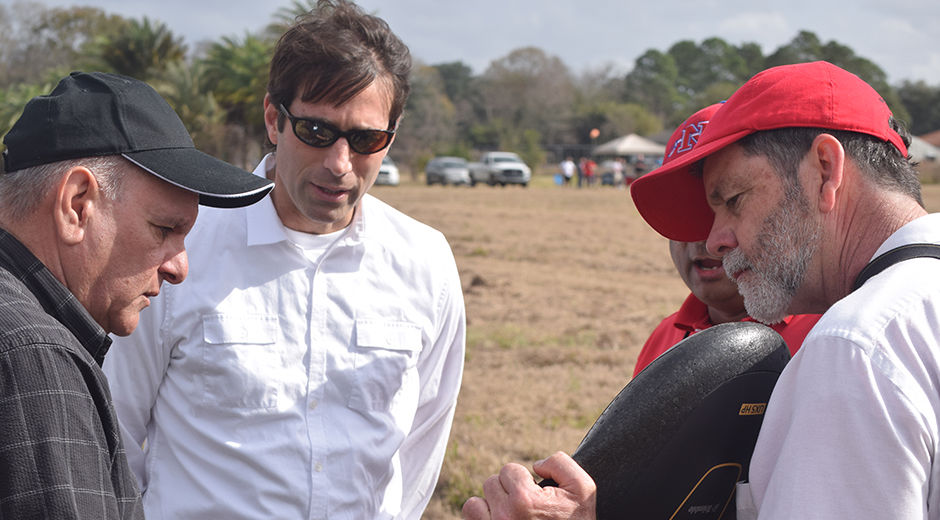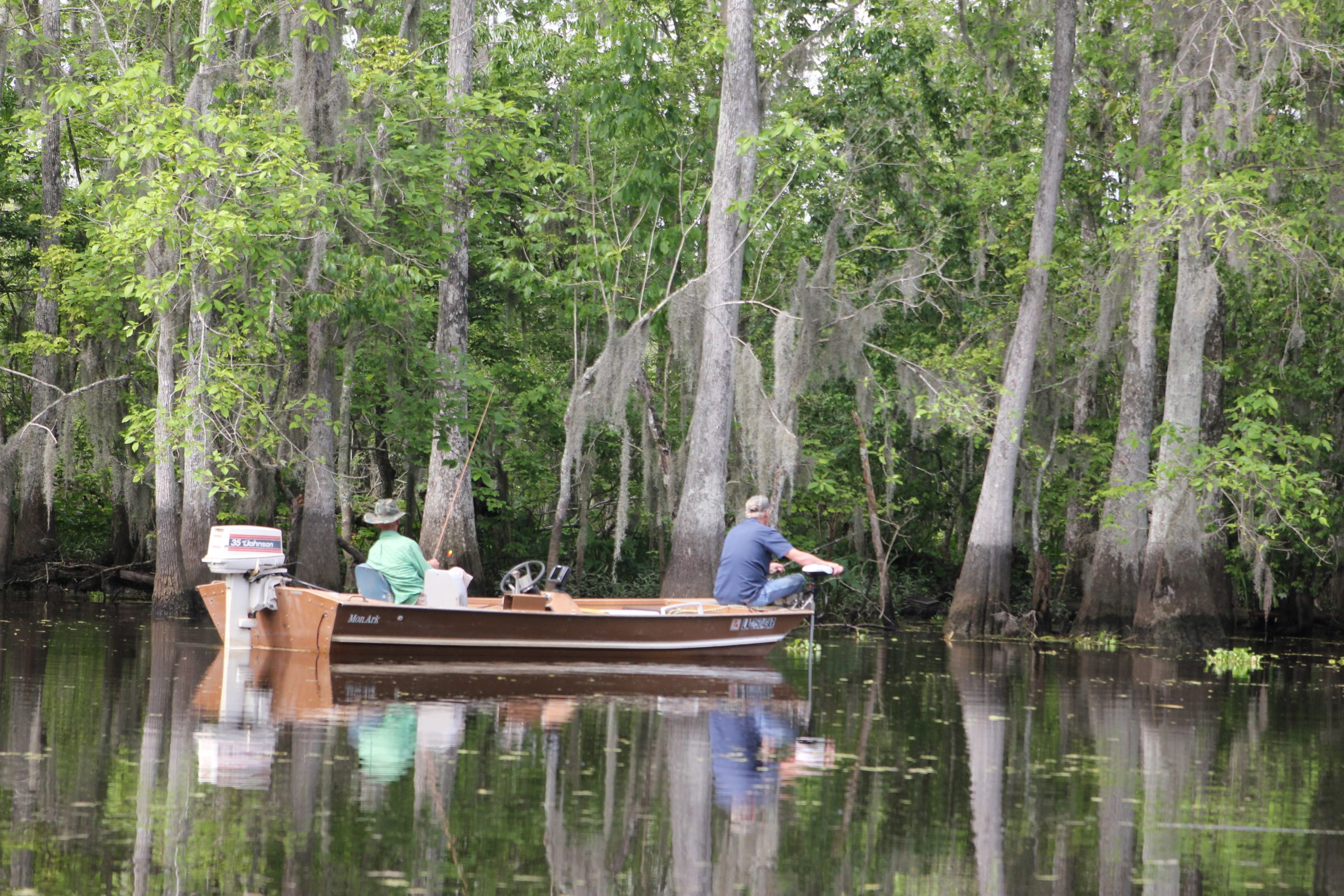
Martin commits to Washington State
January 26, 2017
Raceland fugitives arrested on drug charges
January 31, 2017Nicholls State University is getting back to its core identity while looking toward the future.
The university has recently made upgrades to a kitchen laboratory used by its dietetics program, and a congressman stopped by the university farm to see the latest technology NSU’s geomatics program is using. The university has also continued to see small but steady progress in its mission to have an enrollment of 8,000 students.
Earlier this month, Nicholls President Bruce Murphy addressed faculty ahead of the beginning of the spring semester. During the talk, Murphy spoke about Nicholls getting back to its core identity. In the face of continued budget cuts to the state’s university system, NSU has seen its ability to invest in its professors and their research dwindle.
“About eight years ago, we stopped acting like a university. We stopped doing the things universities do. We stopped having routine pay raises, we stopped having merit increase, we stopped preferred maintenance, we stopped a lot of things universities do,” Murphy.
For the past year Murphy has proposed the state handle costs such as maintaining facilities and paying for the campus police, while students pay for the services they receive themselves, such as classes, books and extracurricular activities. Murphy said he is planning on talking to state senators and representatives from the local delegation about bringing the idea to Baton Rouge.
In the meantime, Nicholls has made some progress in getting back to what it wants to do, partly by continuing to bring students in. Nicholls currently graduates about 1,300 to 1,400 students per year, Murphy said. If the school were at its goal of 8,000 enrolled students, it would be graduating around 1,700. While the gap is still large, it has made progress. According to Murphy, admissions were up by 300 in comparison to the same day in 2016 when he addressed faculty. Murphy credited the small progress to Nicholls keeping its tuition and fees flat, making it the most affordable school in Louisiana’s university system. He also credited the admissions department, which is using more advanced technology to better target and engage with potential students.
To help retain professors, Murphy said Nicholls has budgeted for raises this year. He said each full-time employee at Nicholls is set to receive a $500 retention supplement, while each department will get a pool of money, at $250 per employee, in incentive awards to hand out as department heads see fit. Murphy said he will know for sure on Feb. 3 if Nicholls will be able to go through with the supplemental pay, but he is currently planning to do so.
Murphy said he wanted people to know Nicholls is on track, and there are still great things happening at the university.
“We are thriving. We are a great place to get a quality education. Some of those top moments that we talked about, you look at those, students are being very successful,” Murphy said.
One of those great things was revealed this week in Gouaux Hall, where the dietetics program has renovations to its kitchen lab. The $68,000 renovations cover two classrooms and improve the flooring, ovens and other kitchen equipment. According to a Nicholls press release, one classroom is ready for use while work is being done in the adjacent room.
Down the road on Thoroughbred Drive, Nicholls officials hosted U.S. Rep. Garret Graves to get an update on the geomatics program. Graves dropped in last week to see an unmanned aerial vehicle, also known as a drone, launch and talk about how the geomatics program is using it.
The latest drone technology has been critical to the research of Frank Yrle, a graduate student at Nicholls. Yrle has used drones to analyze barrier islands between the southern ends of Terrebonne and Lafourche parishes and the Gulf of Mexico. The islands, critical to stopping storm surge, have been targeted by local and state coastal restoration officials for rehabilitation projects. Yrle has been using drones to track vegetation on the islands to get a better understanding of the overall health of the islands. The drone imaging provides much higher resolution than satellite imaging of the islands and drones can bring back data faster than satellite, which rotates around the earth and captures images of the state every two weeks or so.
Yrle, who works with both the biology and geomatics departments in his research, said it has been awesome to be on the cutting edge in the state as far as coastal research in concerned.
“I feel like we’re breaking some ground. We’re not the first school to be doing this study with UAV or anything – it’s happening all around the country, even all around the world. I mean, this is one of the first times it’s really being applied in Louisiana. I think it’s great to be applying it to coastal restoration,” Yrle said.
Dr. Balaji Ramachandran, who heads the geomatics program, said while the program has seen enrollment dip recently, it is still being recognized for its achievement. The program, which is the only of its kind in Louisiana, was honored by the National Council of Examiners for Engineering and Surveying with a $10,000 award for being one of the top ten surveying programs in the nation. Ramachandran said the demonstration last week for Graves was to highlight the progress the program continues to make.
“(Graves) has kept up with us over the years. We are basically just showing him the latest and greatest. How we were in 2005 and how we are in 2017. A lot of things have changed over 12 years, that’s what we’re showing him,” Ramachandran said. “This is the thing I tell: Geomatics is a profession where you’re changing your tires as you’re driving your car. That’s how fast it’s changing.”
During the demonstration, Graves floated the idea of the U.S. Department of Defense decommissioning older drones for civilian research use to increase their capabilities. Graves, a former head of the state’s Coastal Protection and Restoration Authority, said the CPRA’s draft 2017 master plan’s bleak outlook on sea level rise means researchers have an even greater impetus on getting the best information going forward, which he said the drones are allowing researchers like Yrle accomplish.
“Us learning a little bit more about – as was talked about – the types of vegetation, the rates of erosion, the success or failure of projects. You can get data, cheaper, faster, on more compressed intervals,” Graves said. “So it really is going to help further perfect some of our efforts on coastal restoration, sustaining our barrier islands and most importantly, keeping our communities protected from hurricanes and floods.”








